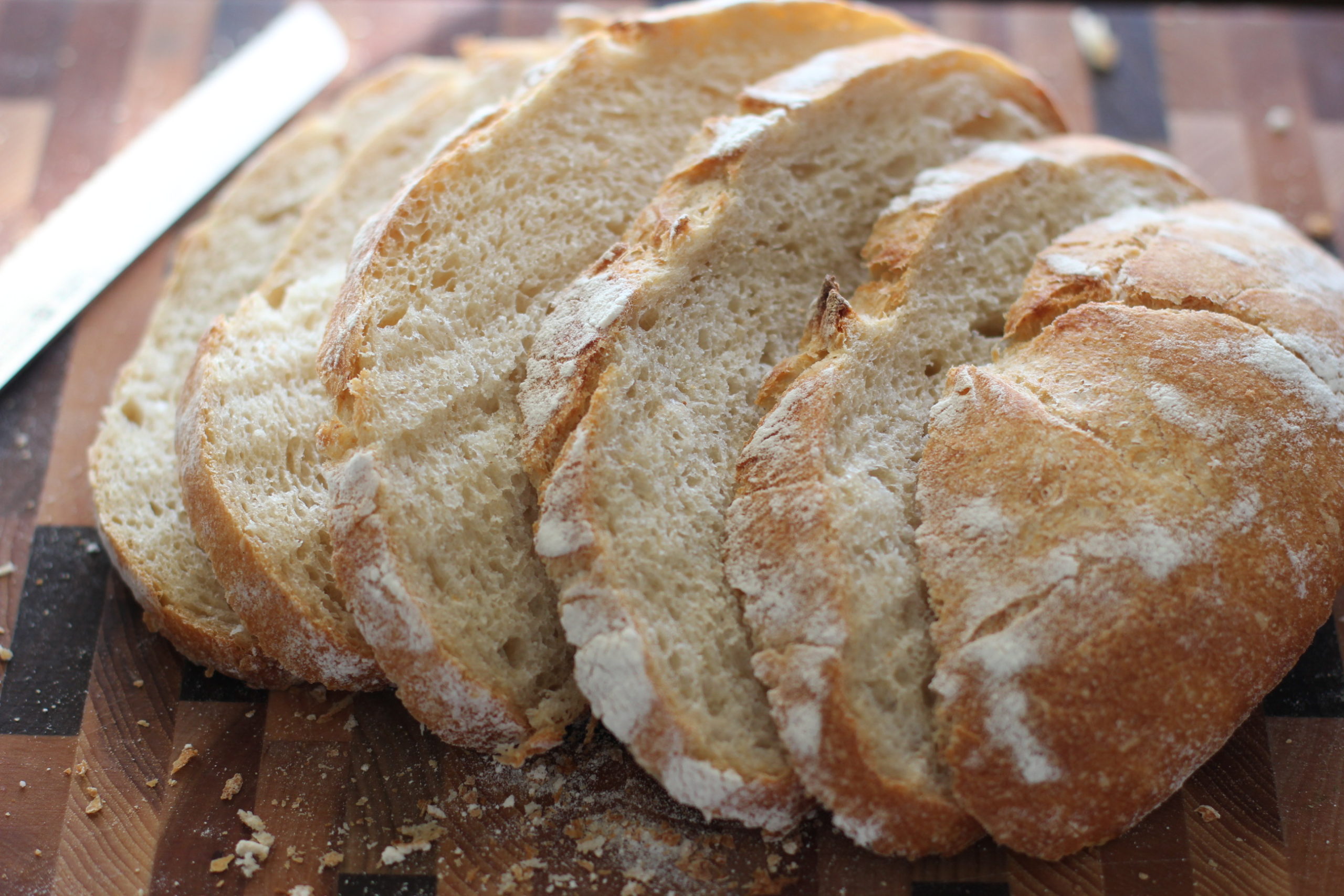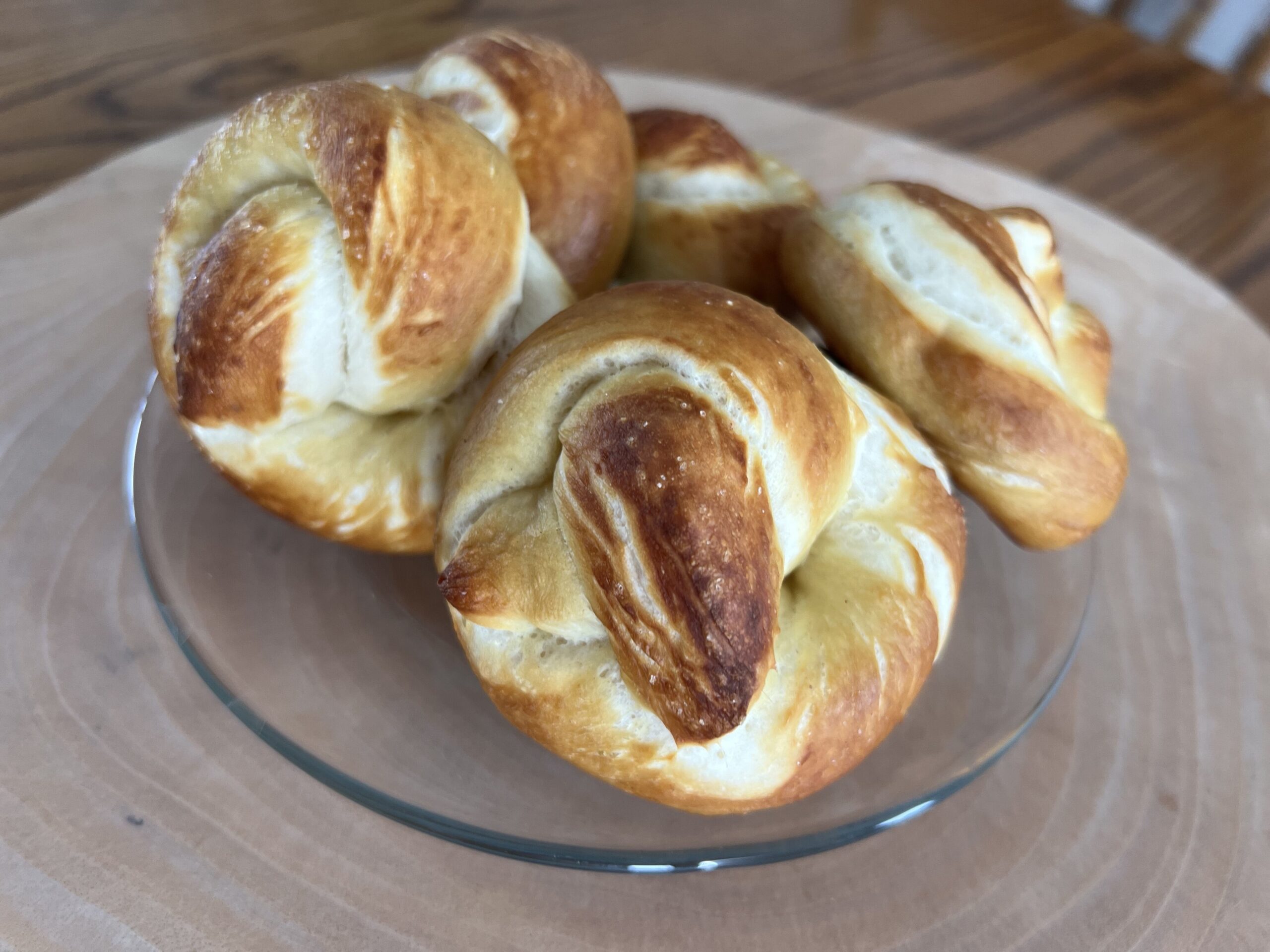Dutch Oven Loaf FAQs
When most people think of sourdough, they think of beautiful, rustic artisan style loaves with the big airy holes and nice crisp crust. There is something extremely satisfying about lifting the lid on your dutch oven to find that beautiful sourdough dutch oven loaf waiting for you. But it doesn’t come without practice and skill, and a whole lot of questions.
These are the most commonly asked questions regarding making a sourdough Dutch oven loaf. There are also videos and resources on my Instagram.
How do I know my starter is ready for bread?
Your starter goes through its own “life cycle” – when you feed it, it starts to ferment and expand, producing CO2 and creating nice bubbles as it rises up. Once it hits the peak, it will slowly start to deflate over time, and then flatten completely and start accumulating hooch, indicating it’s hungry. Your starter is active and best for bread when it’s at the peak and for several hours afterward. Each starter will have it’s own unique timeline but most hit the peak within 3-12 hours after feeding, depending on the starter and temperature. When making bread – the recipe needs “active” starter to rise the dough! Look for that expansion and big bubbles after a feed!
What if I don't have a dutch oven?
You can use a baking stone or baking sheet with a big pot over the loaf to create a closed environment. Optionally you can bake it uncovered on a baking sheet or stone or in a cast iron pan, but put a pan with some water in it on the rack below the bread to create some steam in the oven. The steam helps the bread rise up nicely and get that crisp crust!
How do I store my bread once it's baked?
I use plastic bread bags purchased from amazon, or ziploc bags. I also have a linen bread bag I have been playing around with. For artisan loaves with the crisp crust, if you place them in plastic the crust will soften. They can be stored just at room temp until they’re cut into, then they are best eaten within the first day or two.
Why is my loaf burning on the bottom?
You can turn down the oven temp (ovens can vary quite a bit in temperature) and bake it longer at a lower temp, or you can also place a baking sheet on the rack below the dutch oven so that it deflects some of the heat!
Why is my bread gooey in the middle?
It’s underbaked. One of the best little gadgets I bought for my bread making was an instant read thermometer (linked in my favorites list). The temperature of bread should be 180-190 degrees when done. I like to tilt my bread and stick the thermometer up into the bottom middle of the loaf to test it.
How do I rise my dough in the fridge?
If you know your dough might over proof because you can’t get to it when it needs to bake, you can slow down the rise with the fridge. I like to mix my dough in the evening and get in a couple of hours of stretch and folds before placing it in the fridge. After those first several folds, place the dough in a well oiled bowl and put a lid or greased plastic wrap on top of it and put it in the fridge overnight. The next morning you can remove the dough and let it rest 20-30 minutes, then shape it and do a final rise while your oven is preheating. Then score and bake!
Why do you cut the top of the bread?
As you place your loaf in the dutch oven, that heat and the lid trap in the steam that is created and help your loaf rise up. You want to help direct that steam upward, by showing it where to go. The scoring you do on the loaf before baking will allow the steam to escape where you want it to, and it will help your loaf rise up nicely as well.
What tools are helpful?
I use a lame (scoring tool) and bannetons for my second rise. My bread making faves can be found in my Amazon Store.
Why is my dough runny and sticky after the long rise?
If your dough overproofs (rises too long) then the gluten strands become weak and it starts to break down. It will eventually become a soupy mess if left long enough at room temperature. Learning your rise times will come with practice, but check on it hourly to make sure it’s not rising too much – it will get SUPER light and airy when it’s over proofed.
Why is my loaf so dense?
This is a more chewy bread in texture – it has that crisp crust and fluffy/chewy inside. If your loaf isn’t rising up there are several factors: type of flour used, kneading, rise time, temperature, shaping technique (this can actually be a big one), oven temps/time baking, etc etc. I suggest starting with one area and playing around with it.






Comments +